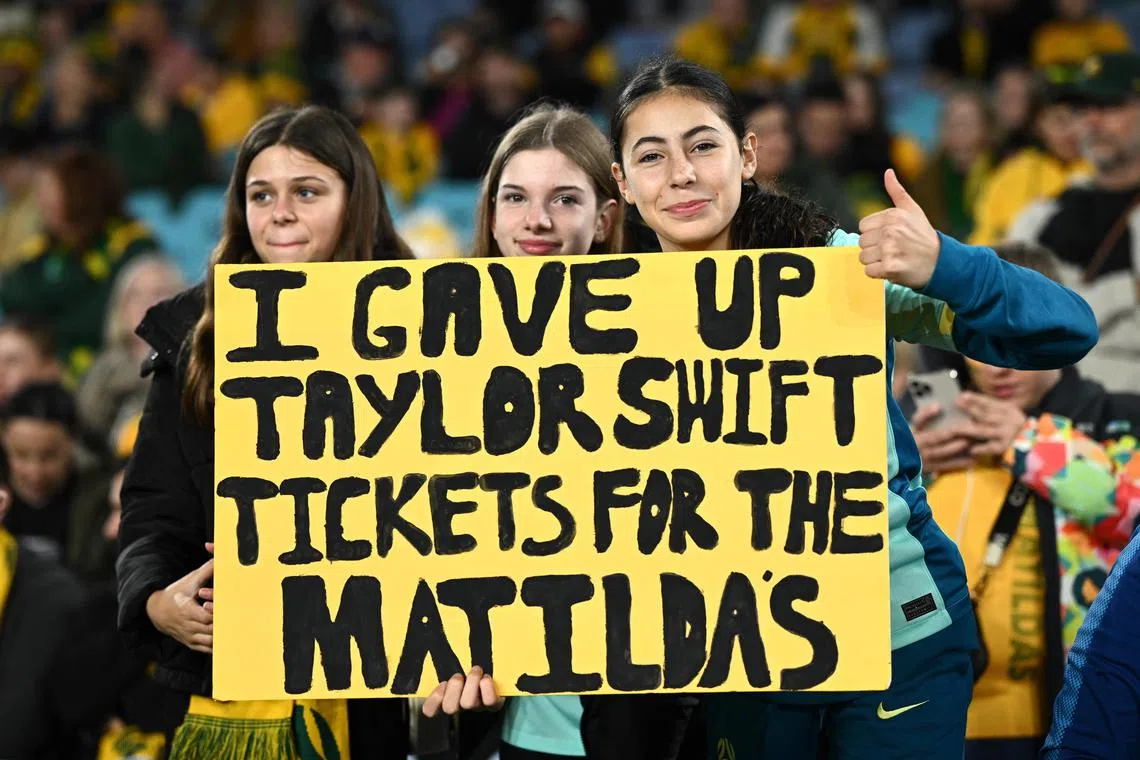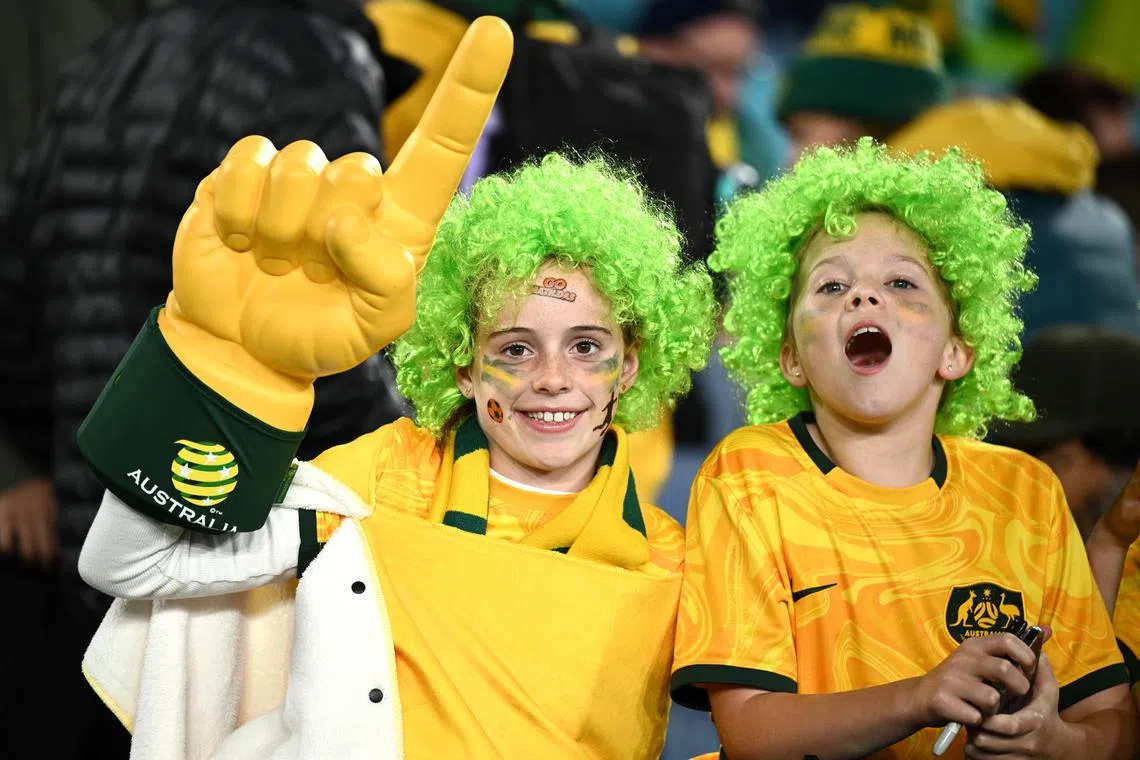World Cup picks up baton for women’s sports in Australia
Sign up now: Get ST's newsletters delivered to your inbox

Matildas supporters ahead of the Women's World Cup 2023 round of 16 football match between Australia and Denmark at Stadium Australia in Sydney on Monday.
PHOTO: EPA-EFE
Follow topic:
MELBOURNE – Australian fans have well and truly embraced their national women’s football team, the Matildas, during the ongoing Women’s World Cup that they are co-hosting with New Zealand.
In 2020, there was a similar outpouring of support for the Australian women’s cricket team. Inside Melbourne Cricket Ground, more than 86,000 people gathered to watch the final of the Women’s T20 World Cup,
For Ellyse Perry, a sporting legend who has represented the country in both the cricket and football World Cups, the 2020 match – the largest crowd to watch a women’s cricket match – was a milestone for women’s sports in Australia.
“It’s really now starting to become embedded in general society, and it’s commonplace,” she said. “It’s not an oddity any more.”
For as long as there have been sports in Australia, women have clamoured to play and participate. What is believed to be the world’s first cycling race for women took place in Sydney in 1888; the country’s first golf championship, in 1894, was women only; and at the 1912 Olympics, Australian women won silver and gold in the first women’s Olympic swimming freestyle race.
Yet, even though Australian women’s sports have a proud history, only recently have they received significant mainstream support.
Sam Kerr, the Matildas star who is widely regarded as one of the best players in the world, said the impact of the World Cup on women’s football was all but unimaginable.
“For years to come, this will be talked about – hopefully, decades to come,” she said in July, citing an uptick in young boys and girls coming to women’s football games.
A longer view on the history of women’s sports in Australia involved many moments of triumph, but also times when able and enthusiastic sportswomen were simply shut out.
“There are peaks and troughs all the way through,” Marion Stell, a historian at the University of Queensland, said of women’s sports in Australia.
“Women make advances – but then it goes away again. It’s never a smooth upward curve.”
Only in the past couple of decades had female athletes been able to make consistent strides on pay,
“I don’t think anyone would have dreamt that it would happen so quickly,” Stell said. “On one hand, it’s been very slow. But on the other hand, when it happened, the floodgates just opened.”

Matildas supporters ahead of the Women's World Cup 2023 round of 16 football match between Australia and Denmark at Stadium Australia in Sydney on Monday.
PHOTO: EPA-EFE
Women had historically been something of a golden goose for Australia at the Olympics, making up a minority of the country’s total athletes but often winning the majority of its medals. At the 1972 Games in Munich, for instance, 10 out of 17 Australian medals were won by women, even as they made up only about 17 per cent of the team.
But it was not until 2023 that a female cricket player was celebrated in statue form for the first time, although the country claims more than 70 statues of male players.
A bronze statue of Belinda Clark, captain of Australia’s World Cup-winning women’s cricket teams in 1997 and 2005, was unveiled at Sydney Cricket Ground in January; it is the first public statue of a female cricket player anywhere in the world. Representation of that kind sends a powerful message, Clark said.
“What are the photos in the club? Who’s on the honour boards? What are we saying to the people who walk in this door?” she asked. “Are you part of this, or are you a guest or a visitor?
“It symbolises that you’re actually part of it. You’re no longer coming, cap in hand, to beg for an opportunity.” NYTIMES

